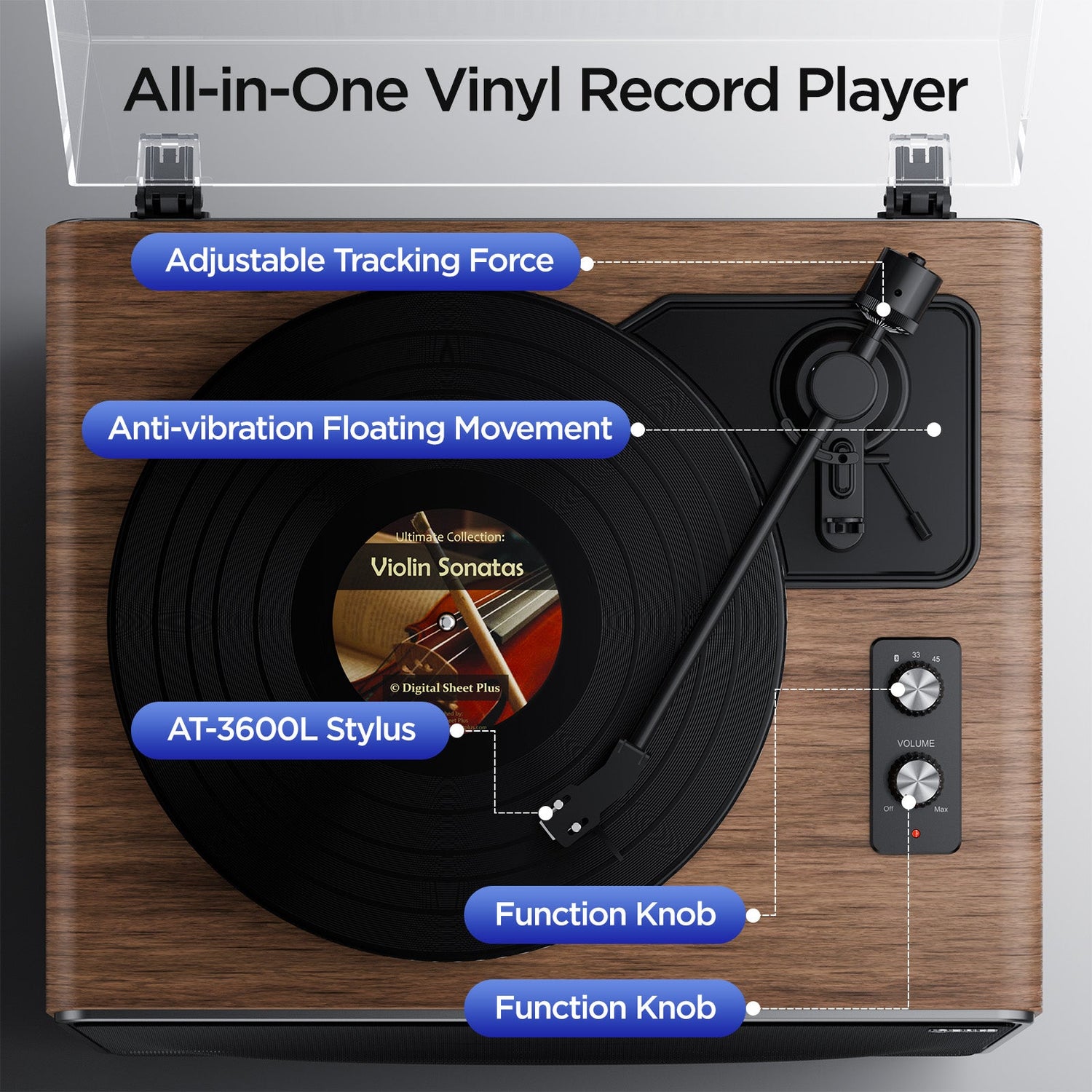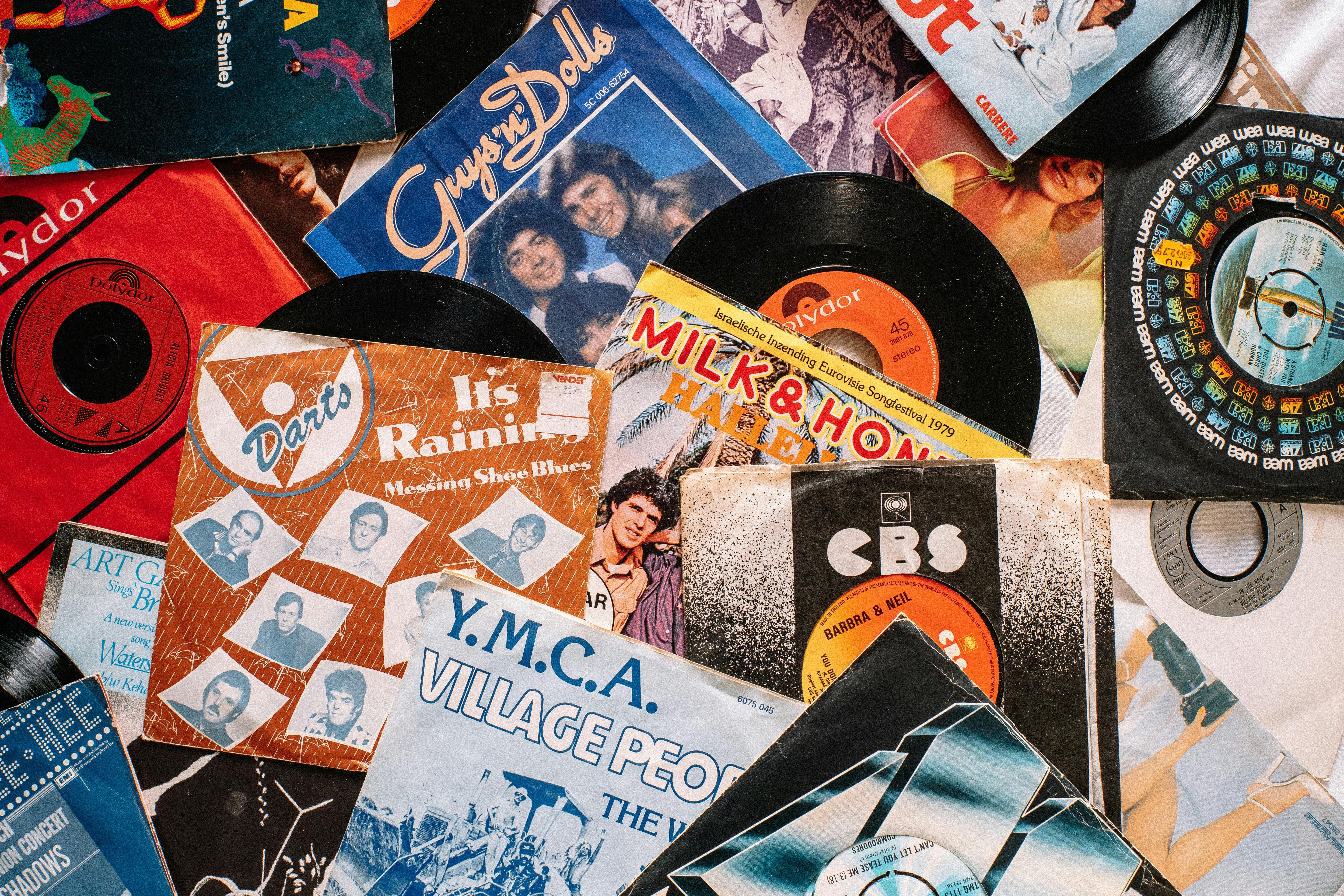In a world saturated with fleeting digital streams and compressed audio, the audiophile turntable stands as a testament to a more deliberate, more tangible, and ultimately, more immersive way of experiencing music. It's not merely a device for playing records; it's a precision instrument engineered to unearth the soul of a recording, to translate microscopic undulations in a vinyl groove into a soundscape so rich and palpable it can transport you to the very time and place the music was made.
But what truly elevates a turntable into the "audiophile" echelon? It's a realm where engineering tolerances are measured in microns, where material science meets artistry, and where every design choice is scrutinized for its impact on the ultimate goal: sonic purity. This guide is for those who seek to understand this pursuit, to navigate its complexities, and to choose an instrument that will bring them closer to the music they love.
Defining the Audiophile Turntable: Beyond the Basics
An audiophile turntable transcends the functional. While any record player will spin a disc and produce sound, an audiophile deck is conceived from the ground up to minimize everything that stands between you and the music – noise, vibration, distortion, and inaccuracy – while maximizing everything that draws you into it – detail, dynamics, soundstage, and emotional engagement.
This philosophy manifests in several key areas:
-
Precision Engineering: Tolerances are vanishingly small. Bearings are polished to near-perfect smoothness, platters are meticulously balanced, and tonearms are designed for flawless tracking.
-
Material Science: The choice of materials for the plinth, platter, tonearm, and even smaller components is critical. The goal is often to achieve a balance of rigidity, mass, and damping to control or eliminate unwanted resonances.
-
Isolation: An audiophile turntable is designed to be an island of stability, impervious to both internal (motor, bearing) and external (footfalls, airborne) vibrations.
-
Modularity and Upgradability: Many audiophile turntables are designed with future upgrades in mind, allowing the owner to evolve the system as their preferences and budget allow.
-
Focus on Core Performance: You'll often find a deliberate eschewing of superfluous features (like auto-return or built-in preamps in higher-end models) in favor of investing every possible resource into the core components that dictate sound quality.
Anatomy of an Audiophile Turntable: A Symphony of Components
Understanding the individual components and their interplay is crucial to appreciating the design ethos of an audiophile turntable.
-
The Plinth (Base): The Foundation of Stability
-
Function: Provides a stable, non-resonant platform for all other components. It must absorb or dissipate vibrations.
-
Materials & Design:
-
High Mass: Dense materials like thick MDF, slate, granite, or exotic composites are used to resist vibration.
-
Constrained Layer Damping (CLD): Multiple layers of different materials are bonded together to cancel out resonances (e.g., wood/metal/elastomer sandwiches).
-
Low Mass, High Rigidity: Some designs, particularly from UK manufacturers, favor lightweight but extremely rigid plinths (e.g., Rega), relying on careful energy management.
-
Suspended vs. Non-Suspended: Suspended designs (e.g., Linn Sondek LP12) use springs or elastomers to isolate the platter and tonearm from the plinth and motor, while non-suspended designs rely on mass and damping.
-
-
-
The Platter & Bearing: The Dance of Precision
-
Function: Provides a stable, inert, and perfectly speed-consistent rotating surface for the record. The bearing is its critical interface with the plinth.
-
Platter Materials: Acrylic, Delrin, high-mass aluminum, vinyl-topped alloys, ceramic, or even glass are chosen for their specific resonant properties and mass. The goal is often to mimic the mechanical impedance of the vinyl record itself or to provide exceptional damping.
-
Mass & Inertia: A heavy platter provides greater flywheel effect, smoothing out minute speed variations and resisting stylus drag.
-
Bearing Assembly: This is where true precision shines. Hardened steel shafts, sapphire or ceramic thrust plates, and exotic lubricants are used to achieve ultra-low friction and noise. Inverted bearings (where the point of rotation is at the top) are also common.
-
-
The Tonearm: Guiding the Stylus with Grace and Accuracy
-
Function: Allows the cartridge and stylus to trace the record groove with perfect tangency (or as close as possible for pivoted arms) and consistent vertical tracking force, with minimal friction and resonance.
-
Design Types:
-
Pivoted Arms: The most common type.
-
Gimballed Bearings: Use multiple low-friction bearings for movement in both horizontal and vertical planes.
-
Uni-Pivot Bearings: The arm balances on a single sharp point, offering very low friction but requiring careful setup.
-
-
Linear/Tangential Tracking Arms: Move the cartridge in a straight line across the record, mimicking the path of the cutting lathe stylus, thus eliminating tracking angle error. More complex and expensive.
-
-
Materials: Carbon fiber, magnesium, titanium, exotic woods – chosen for rigidity, low mass, and self-damping properties.
-
Effective Mass: The tonearm's mass as "seen" by the cartridge. This must be correctly matched to the cartridge's compliance (springiness of its suspension) for optimal performance. A mismatch can lead to poor tracking or exaggerated resonances.
-
Adjustability: Crucial for audiophile setups:
-
Vertical Tracking Angle (VTA) / Stylus Rake Angle (SRA): Fine-tuning the angle at which the stylus sits in the groove.
-
Azimuth: Ensuring the stylus is perfectly perpendicular to the record surface when viewed from the front.
-
Anti-Skate (Bias Compensation): Counteracts the natural inward pull on the tonearm.
-
-
Internal Wiring: High-quality, low-capacitance wiring from cartridge clips to output jacks is essential to preserve the delicate phono signal.
-
-
The Motor & Drive System: The Unwavering Beat
-
Function: To rotate the platter at an absolutely precise and stable speed (33⅓ or 45 RPM) with minimal noise and vibration transfer.
-
Drive Types:
-
Belt Drive: An elastic belt connects the motor pulley to the platter (or sub-platter). Naturally isolates motor vibration. Most common in audiophile designs.
-
Direct Drive: The platter is mounted directly on the motor shaft. Offers high torque and speed stability but requires exceptional motor design to prevent noise/vibration transfer. High-end direct-drive designs (e.g., Technics SP-10R, some VPI models) have overcome earlier criticisms.
-
Idler Wheel Drive (Less Common in New Audiophile): A rubber wheel transfers motion from a high-torque motor to the platter rim. Prized by some for their powerful, dynamic sound but can be prone to rumble if not perfectly implemented and maintained.
-
-
Motor Type & Control: Sophisticated AC synchronous or DC servo motors are often used, sometimes with external power supplies and quartz-locked speed controllers for ultimate stability.
-
-
The Cartridge: Where the Magic Begins
-
Function: The transducer that converts the mechanical vibrations of the stylus in the groove into an electrical signal.
-
Types:
-
Moving Magnet (MM): Tiny magnets attached to the cantilever move relative to fixed coils. Generally higher output, more robust, and styli are often user-replaceable.
-
Moving Coil (MC): Tiny coils attached to the cantilever move within a fixed magnetic field. Generally lower output (requiring a dedicated MC phono stage or step-up transformer), often more detailed and nuanced, and styli are usually not user-replaceable (requiring a retip or exchange).
-
High-Output MC (HOMC): A hybrid that offers MC characteristics with output levels closer to MM, compatible with MM phono stages.
-
-
-
Stylus Profiles: The shape of the diamond tip that contacts the groove.
-
Conical/Spherical: Simplest, most forgiving of setup, but less contact area means less detail retrieval.
-
Elliptical: Better contact area than conical, good balance of performance and cost.
-
Line Contact (Shibata, MicroLine, Micro-Ridge, Fine Line, etc.): Complex shapes that mimic the cutting stylus, offering maximum groove wall contact, excellent detail retrieval, extended high-frequency response, and potentially longer stylus/record life due to distributed pressure. More demanding of precise setup.
-
-
Cantilever Materials: Aluminum, boron, sapphire, ruby, diamond – chosen for stiffness and low mass to accurately transmit vibrations from stylus to generator.
-
The Crucial Role of Synergy and Setup
An audiophile turntable is more than the sum of its parts. Synergy is key. The tonearm's effective mass must complement the cartridge's compliance. The phono preamplifier must be an appropriate match for the cartridge's type (MM/MC) and output characteristics. For a deeper dive into the tonearm/cartridge compliance matching, resources like the forums on Vinyl Engine often have detailed discussions and calculators.
And even the finest components will underperform if not meticulously set up and calibrated. This includes:
-
Leveling the turntable.
-
Correct cartridge mounting and alignment (using a quality protractor).
-
Setting precise Vertical Tracking Force (VTF) with a stylus force gauge.
-
Adjusting VTA/SRA, azimuth, and anti-skate.
-
Ensuring proper grounding to eliminate hum.
The Listening Environment & Isolation: The Unseen Components
Your room's acoustics and the quality of the equipment rack or platform are integral to an audiophile system. A turntable is a mechanical vibration sensor; it will pick up airborne vibrations from your speakers and floorborne vibrations. Proper isolation – through dedicated audiophile racks, isolation platforms (using materials like sorbothane, constrained layers, or even active vibration cancellation systems) – is not a luxury but a necessity for unlocking a turntable's full potential.
The Upgrade Path & The Law of Diminishing Returns
The beauty of many audiophile systems is their upgradability. You might start with a solid foundation and improve the cartridge, tonearm, power supply, or phono stage over time. However, be aware of the law of diminishing returns. As you ascend the price ladder, the sonic improvements for each dollar spent tend to become smaller and more nuanced. The "sweet spot" is subjective and depends on your budget and listening acuity.
The XJ-HOME Philosophy: Engineering for Emotional Connection
At XJ-HOME, we believe that the ultimate purpose of an audiophile turntable is to forge a profound emotional connection with the music. This requires not just technical excellence but a holistic approach to design, where every component works in harmony to serve the sound. Our philosophy, reflected in the products and insights available at https://xenonjade.com, centers on meticulous engineering, the use of high-quality materials chosen for their sonic neutrality and stability, and a commitment to designs that are both aesthetically pleasing and acoustically superior. We strive to create equipment that gets out of the way of the music, allowing the artist's intent to emerge with breathtaking clarity and realism. This isn't just about specifications; it's about the shivers down your spine when a familiar track reveals a previously unheard subtlety.
Beyond the Specs: The Subjective Journey
While technical specifications provide a framework, the final arbiter of an audiophile turntable's quality is your own ears. Listening to different designs, ideally in a familiar system or a well-curated showroom, is invaluable. What sounds analytical and hyper-detailed to one person might be musical and engaging to another. Trust your ears, but inform them with knowledge.
Conclusion: The Enduring Quest for Analog Perfection
The world of audiophile turntables is a deep and fascinating one, a testament to humanity's enduring quest for beauty and precision in the reproduction of sound. It's a journey that demands curiosity, patience, and a willingness to listen critically. By understanding the principles outlined in this guide, you're well-equipped to navigate this world, to discern true quality from marketing hype, and to select an instrument that will provide countless hours of profound musical enjoyment. The pursuit of sonic purity is a lifelong adventure, and the right turntable is your most trusted companion on that quest.





Leave a comment
All comments are moderated before being published.
This site is protected by hCaptcha and the hCaptcha Privacy Policy and Terms of Service apply.